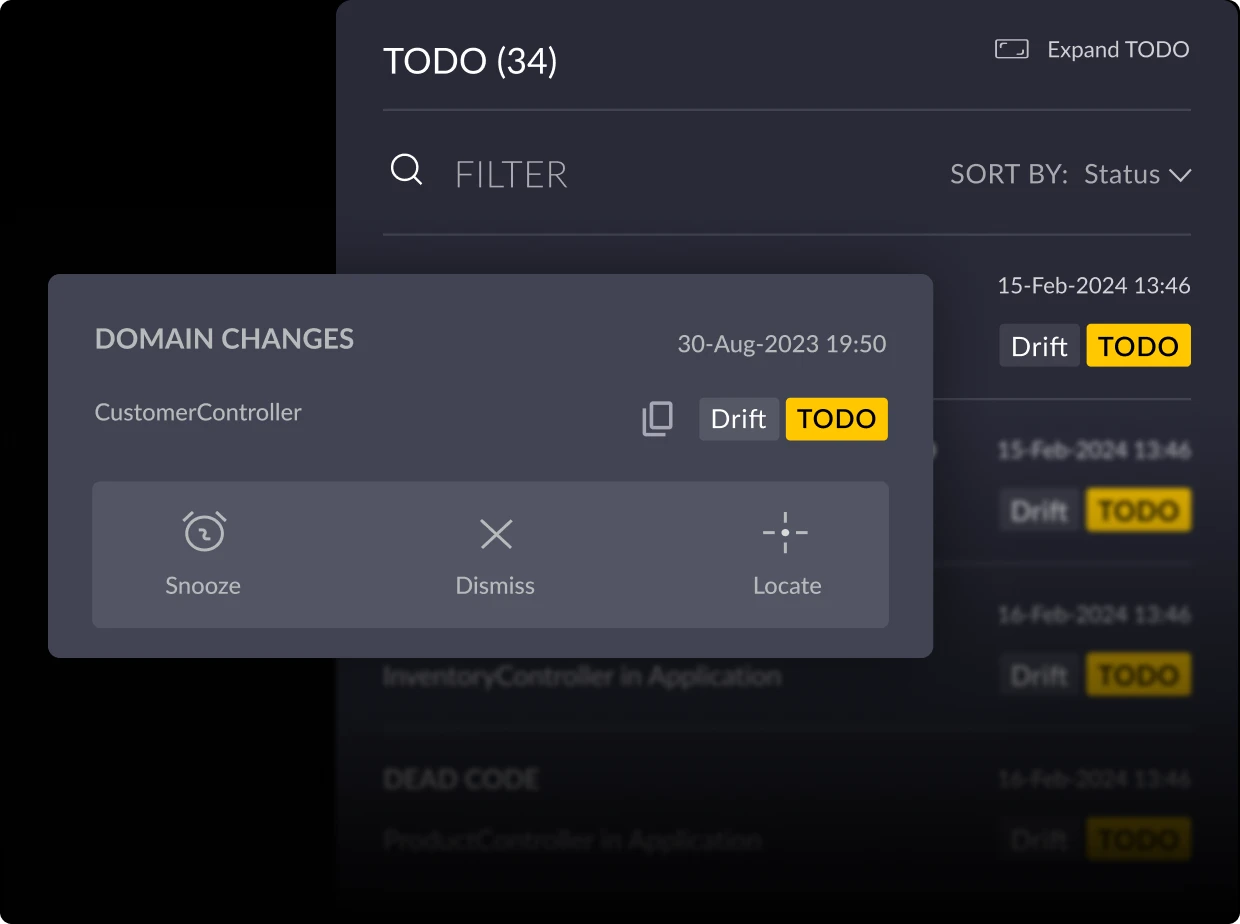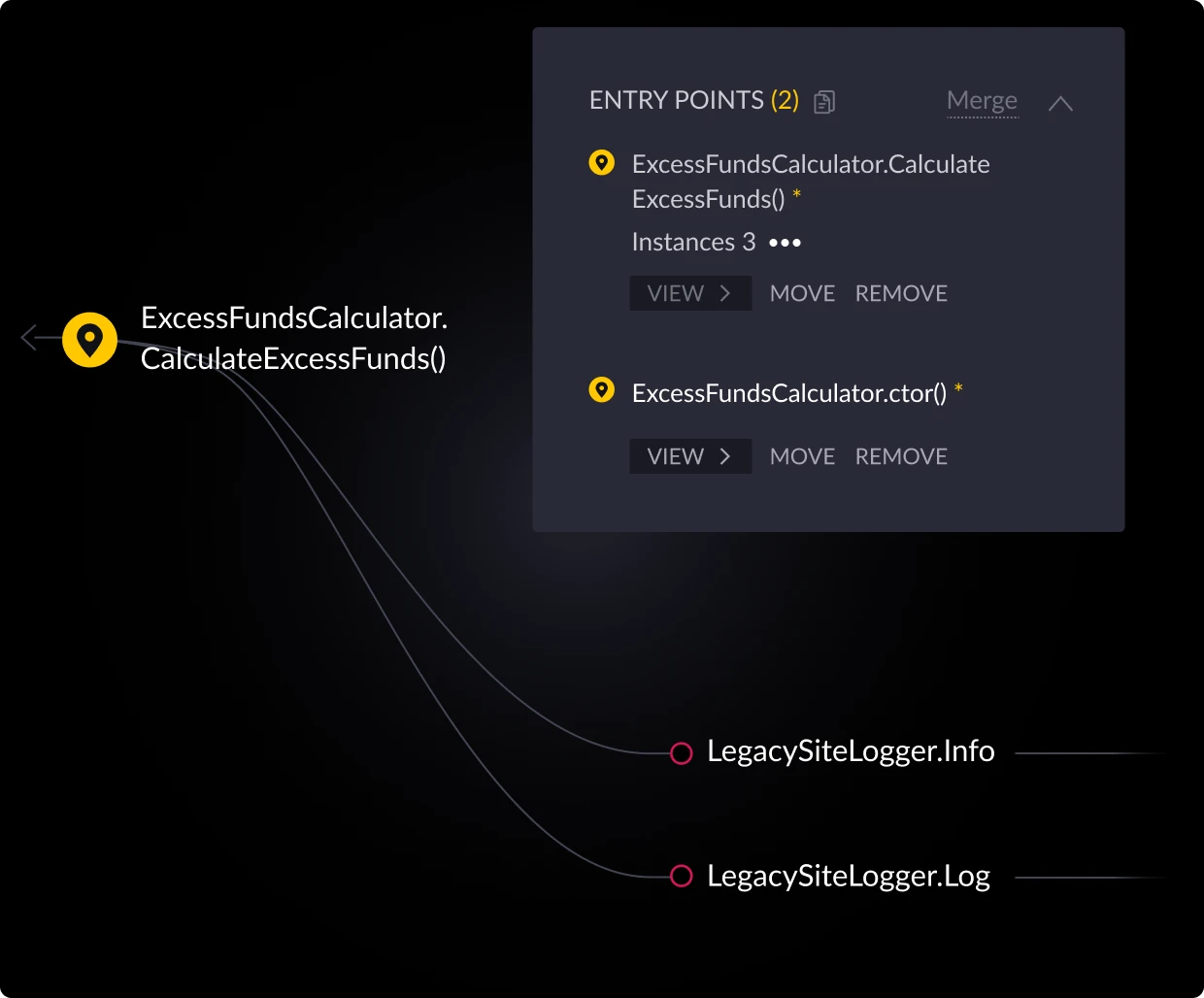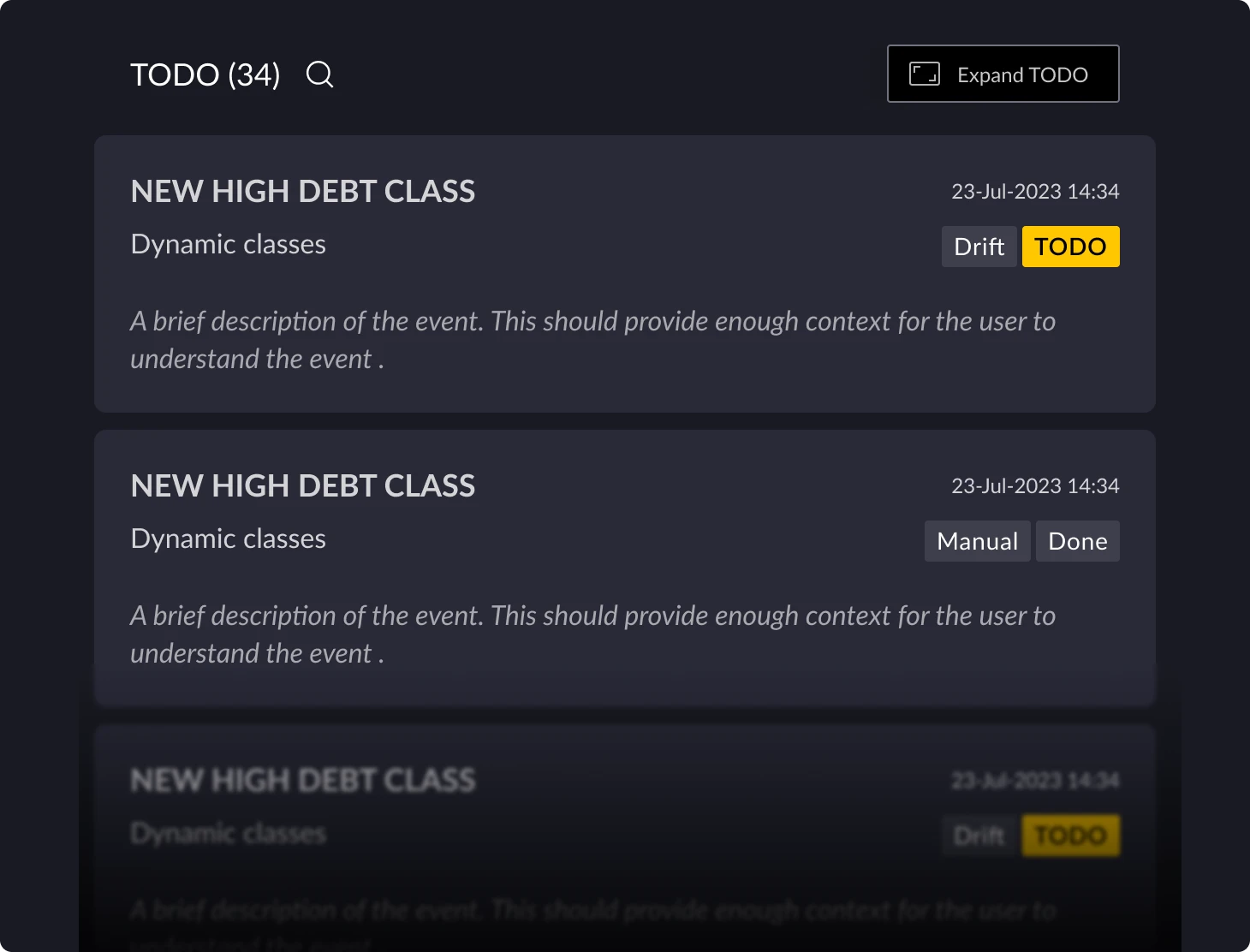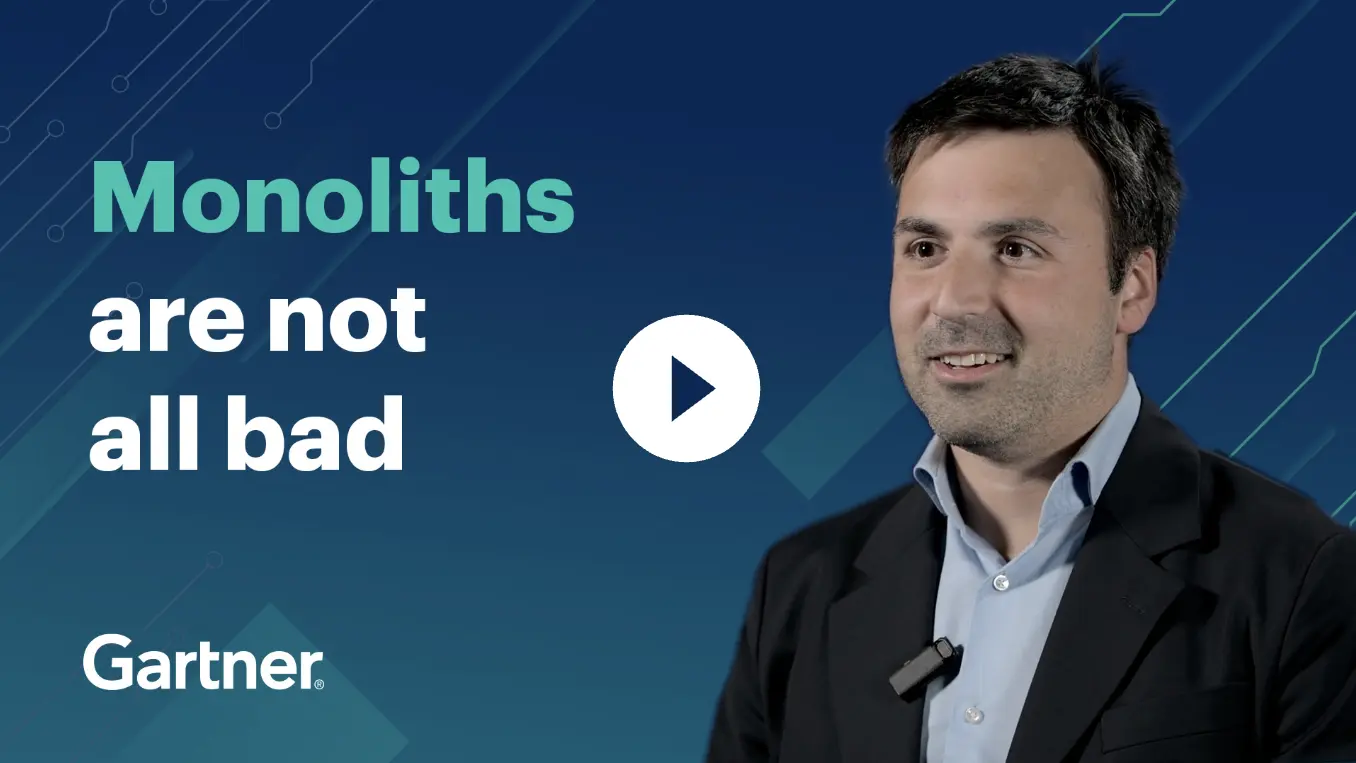Decrease dependencies between domains
Reduce complexity in your monolithic architecture as part of your modernization journey by addressing dependencies that affect scale and performance. vFunction instantly finds dependencies across libraries, databases, services, and more and suggests appropriate changes.










